Quantitative Evaluation of Tongue Protrusion Force
Abstract
INTRODUCTION
METHODS
Subjects
Qualitative evaluation
Quantitative evaluation - equipment and procedure
Data analysis
RESULTS
DISCUSSION
CONCLUSIONS
Acknowledgments
References
- Barroso, M.F.S., C.G. Costa, J.M.E. Saffar, E.B. Las Casas, A.R. Motta, T.V.C. Perilo, M.C. Batista, and V.G. Brito. 2009. Development of a prototype system for the objective measurement of tongue forces. SBA Controle & Automação 20, 2: 156–163. (in Portuguese). [Google Scholar]
- Berger, M.J., and T.J. Doherty. 2010. Sarcopenia: prevalence, mechanisms, and functional consequences. Interdisciplinary Topics in Gerontology 37: 94–114. [Google Scholar]
- Bu Sha, B.F., S.J. England, R.A Parisi, and R.J. Strobel. 2000. Force production of the genioglossus as a function of muscle length in normal humans. Journal of Applied Physiology 88: 1678–84. [Google Scholar] [CrossRef] [PubMed][Green Version]
- Bu Sha, B.F., R.J. Strobel, and S.J. England. 2002. The length-force relationship of the human genioglossus in patients with obstructive sleep apnea. Respiratory Physiology & Neurobiology 130, 2: 161–168. [Google Scholar]
- Clark, H.M., P.A. Henson, W.D. Barber, J.A.G. Stierwalt, and M. Sherrill. 2003. Relationships among subjective and objective measures of tongue strength and oral phase swallowing impairments. American Journal of Speech-Language Pathology 12: 40–50. [Google Scholar] [CrossRef] [PubMed]
- Crow, H.C., and J.A. Ship. 1996. Tongue strength and endurance in different aged individuals. Journals of Gerontology Series A-Biological Sciences & Medical Sciences 51, 5: M247–250. [Google Scholar]
- Dworkin, J.P., A.E. Aronson, and D.W. Mulder. 1980. Tongue force in normals and in dysarthric patients with amyotrophic lateral sclerosis. Journal of Speech and Hearing Research 23, 4: 828–837. [Google Scholar] [CrossRef]
- Hayashi, R., K. Tsuga, R. Hosokawa, M. Yoshida, Y. Sato, and Y. Akagawa. 2002. A novel handy probe for tongue pressure measurement. International Journal of Prosthodontics 15, 4: 385–388. [Google Scholar]
- Hartman, D.E., J.P. Dworkin, and R.L. Keith. 1980. Tongue strength part II: in artificial alaryngeal speech. Laryngoscope 90: 867–870. [Google Scholar] [CrossRef]
- Lambrechts, H., E. De Baets, S. Fieuws, and G. Willems. 2010. Lip and tongue pressure in orthodontic patients. European Journal of Orthodontics 32, 4: 466–71. [Google Scholar] [CrossRef]
- Mortimore, I.L., S.P. Bennett, and N.J. Douglas. 2000. Tongue protrusion strength and fatigability: Relationship to apnoea/hypopnoea index and age. Journal of Sleep Research 9: 389–393. [Google Scholar] [CrossRef] [PubMed]
- Mortimore, I.L., P. Fiddes, S. Stephens, and N.J. Douglas. 1999. Tongue protrusion force and fatiguability in male and female subjects. European Respiratory Journal 14: 191–195. [Google Scholar] [CrossRef][Green Version]
- Motta, A.R., J.V. Perim, T.V.C. Perilo, E.B. Las Casas, C.G. Costa, F.E. Magalhães, and J.M.E. Saffar. 2004. Method for the measurement of axial forces produced by the human tongue. Revista CEFAC 6, 2: 164–169. (in Portuguese). [Google Scholar]
- Nicosia, M.A., J.A. Hind, E.B. Roecker, M. Carnes, J. Doyle, G.A. Dengel, and J. Robbins. 2000. Age effects on the temporal evolution of isometric and swallowing pressure. Journal of Gerontology 55A, 11: M634–640. [Google Scholar] [CrossRef] [PubMed]
- Perilo, T.V.C., A.R. Motta, E.B. Las Casas, J.M.E. Saffar, and C.G. Costa. 2007. Objective evaluation of axial forces produced by the tongue of oral breathing children. Revista da Sociedade Brasileira de Fonoaudiologia 12, 3: 184–190. (in Portuguese). [Google Scholar] [CrossRef]
- Pittman, L.J., and E.F. Bailey. 2008. Genioglossus and intrinsic electromyographic activities in impeded and unimpeded protrusion tasks. Journal of Neurophysiology 101, 1: 276–282. [Google Scholar] [CrossRef]
- Posen, A.L. 1972. The influence of maximum perioral and tongue force on the incisor teeth. Angle Orthodontics 42, 4: 285–309. [Google Scholar]
- Potter, N.L., R.D. Kent, and J.A. Lazarus. 2009. Oral and manual force control in preschool-aged children: is there evidence for common control? Journal of Motor Behavior 41: 66–82. [Google Scholar] [CrossRef]
- Potter, N.L., and L. Short. 2009. Maximal Tongue Strength in Typically Developing Children and Adolescents. Dysphagia 24, 4: 391–397. [Google Scholar] [CrossRef]
- Price, P., and B. Darvell. 1981. Force and mobility in the ageing human tongue. The Medical Journal of Australia 1: 75–78. [Google Scholar] [CrossRef]
- Robbins, J., R. Levine, J. Wood, E.B. Roecker, and E. Luschei. 1995. Age effects on lingual pressure generation as a risk factor for dysphagia. Journals of Gerontology Series A: Biological Sciences 50, 5: M257–262. [Google Scholar] [CrossRef] [PubMed]
- Ruan, W., M. Chen, Z. Gu, Y. Lu, J. Su, and Q. Guo. 2005. Muscular forces exerted on the normal deciduous dentition. Angle Orthodontics 75, 5: 785–790. [Google Scholar]
- Sosnoff, J.J., and S.J. Voudrie. 2009. Practice and age-related loss of adaptability in sensorimotor performance. Journal of Motor Behavior 41, 2: 137–146. [Google Scholar] [CrossRef]
- Stierwalt, J.A.G., and S.R. Youmans. 2007. Tongue measures in individuals with normal and impaired swallowing. American Journal of Speech-Language Pathology 16, 2: 148–156. [Google Scholar] [CrossRef] [PubMed]
- Weijnen, F.G., J.B.M. Kuks, A. Van Der Bilt, H.W. Van Der Glas, M.W.M. Wassenberg, and F. Bosman. 2000. Tongue force in patients with miastenia gravis. Acta Neurologica Scandinavica 102: 303–8. [Google Scholar] [CrossRef]

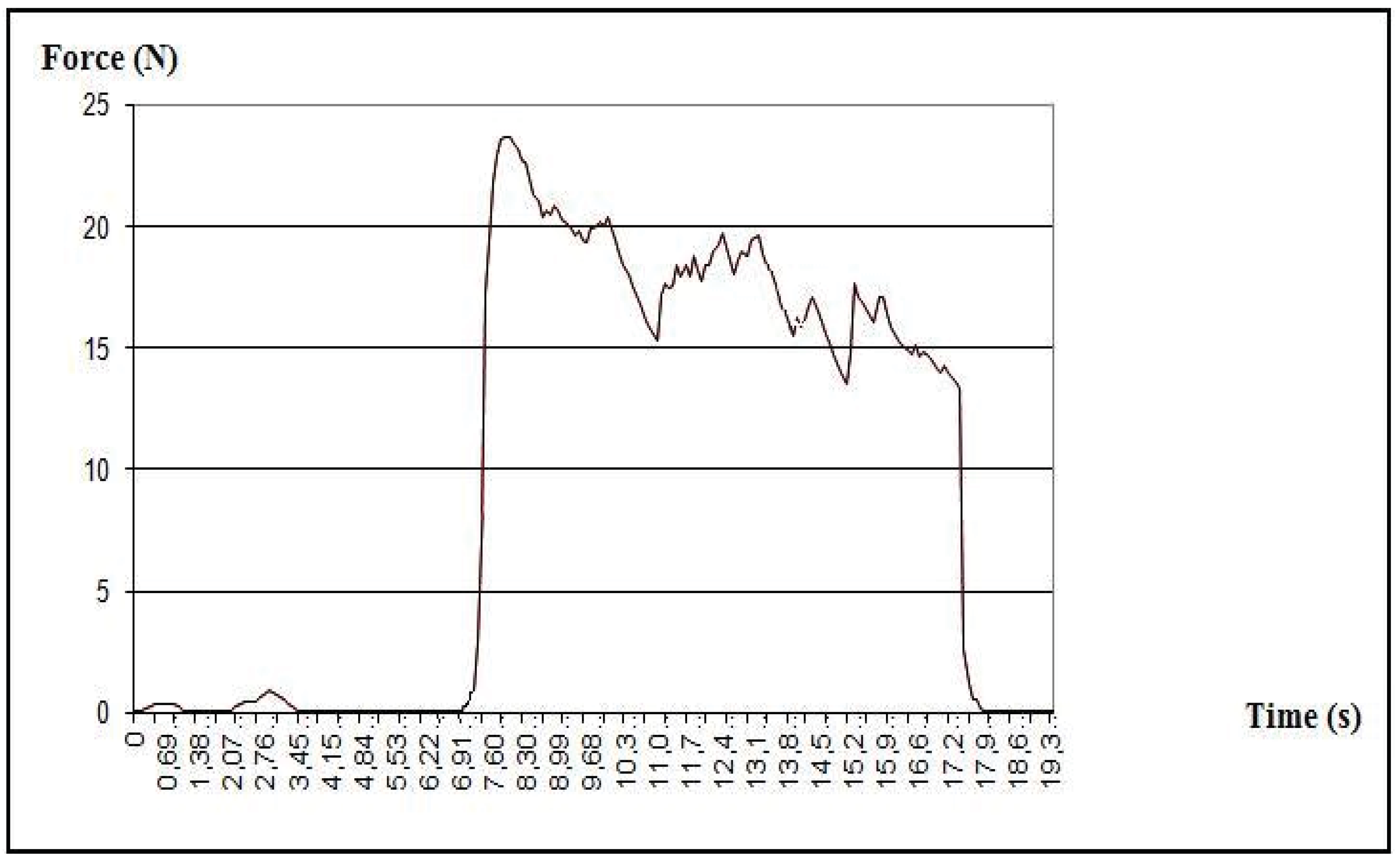
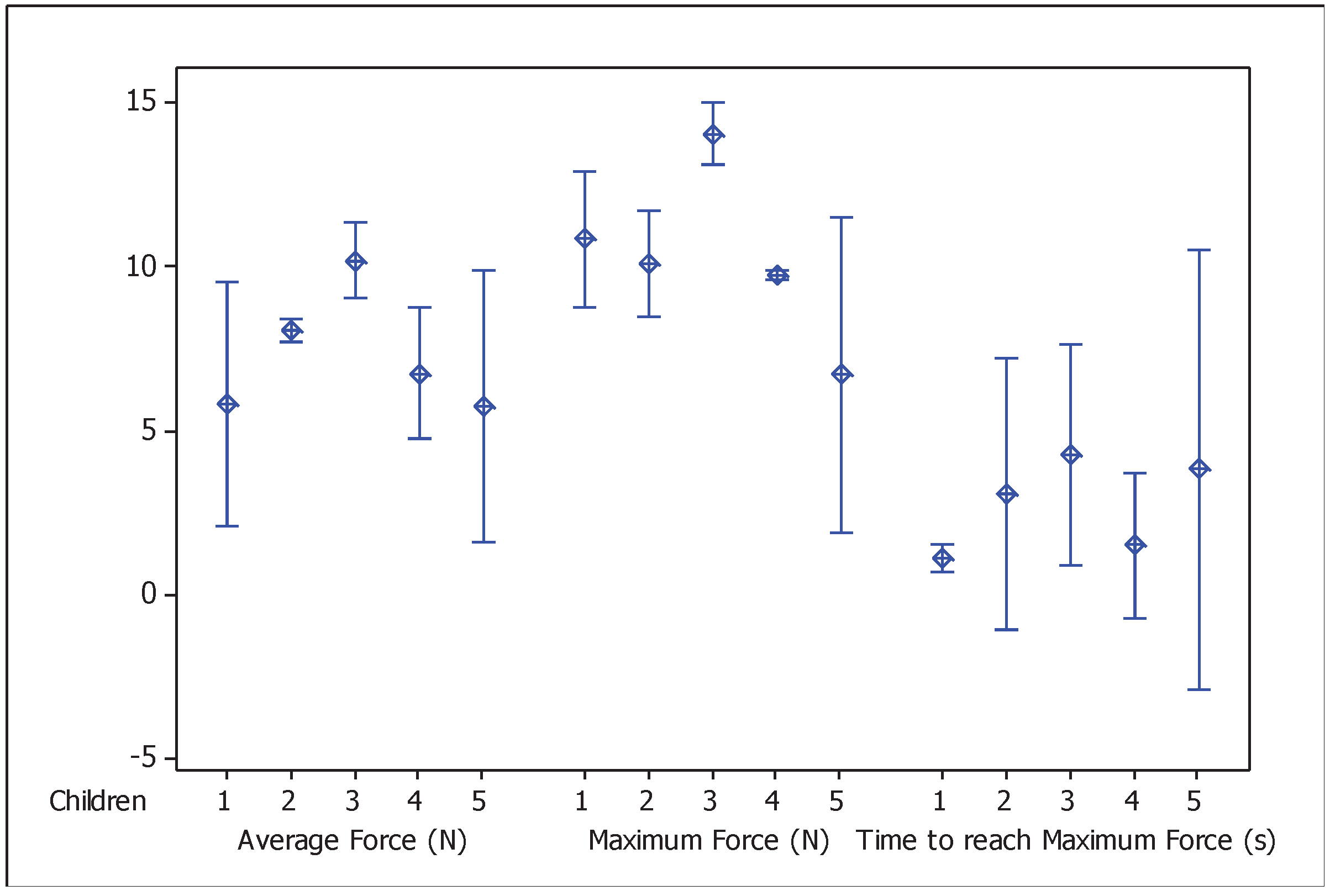
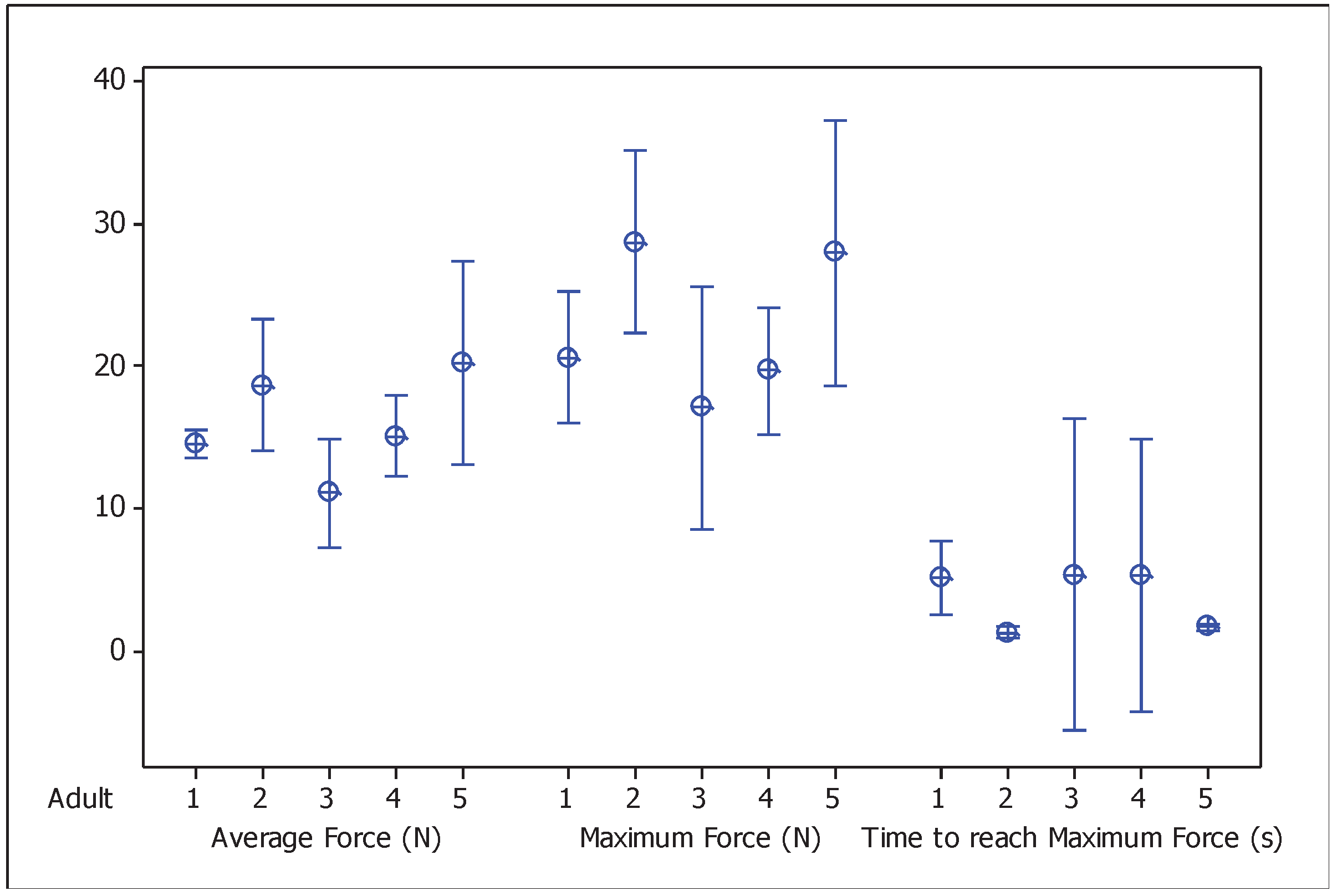
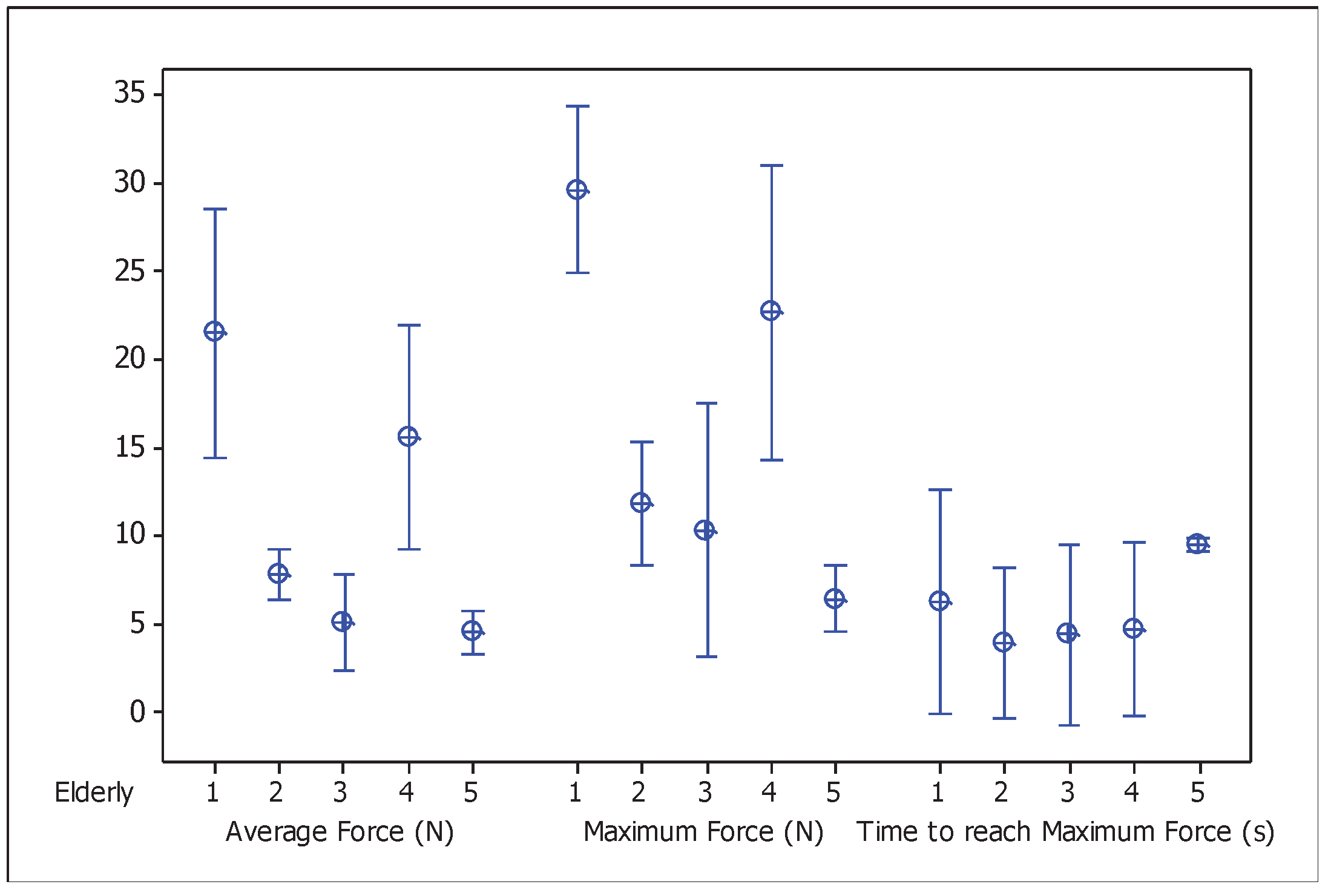

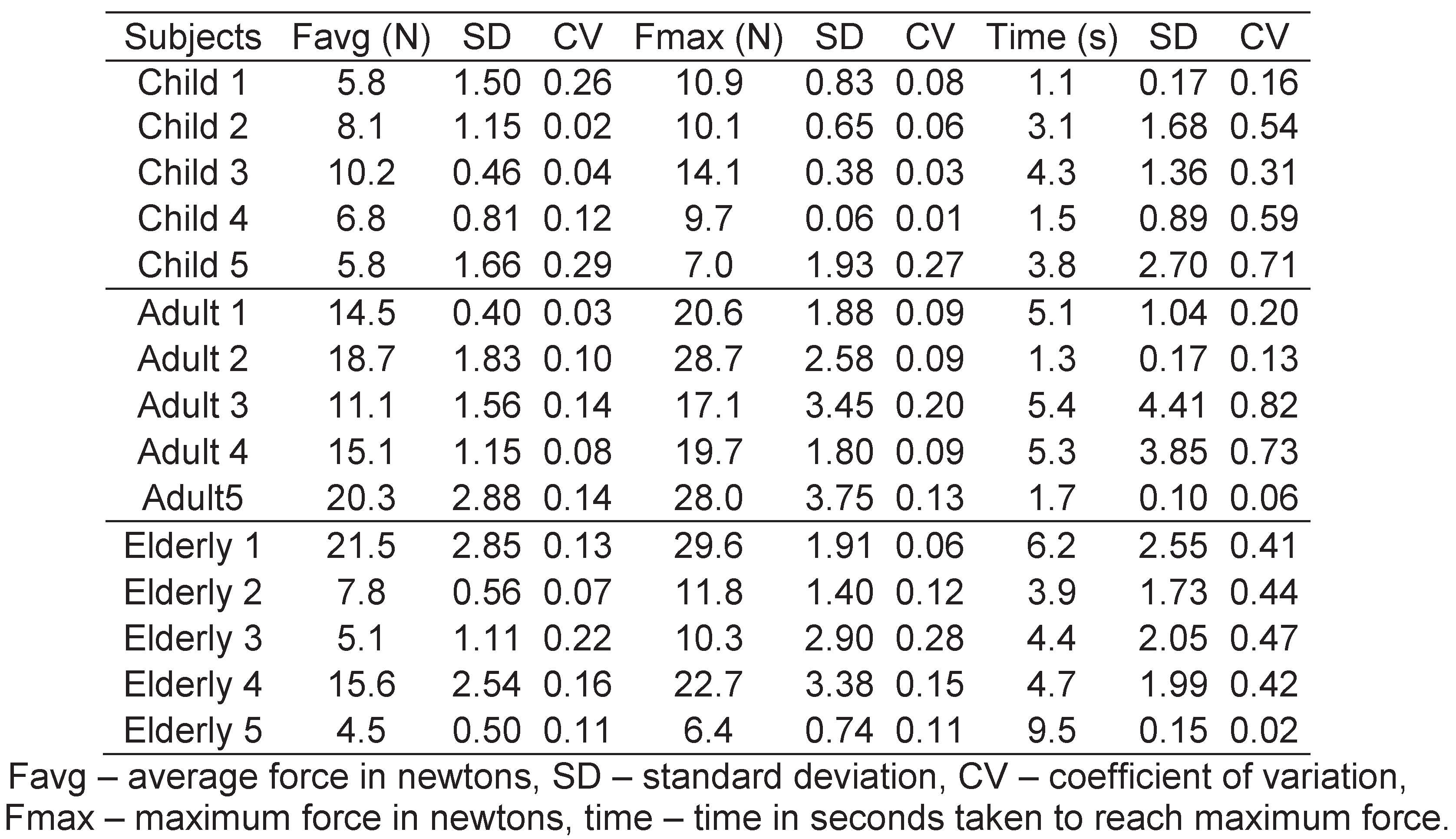 |
 |
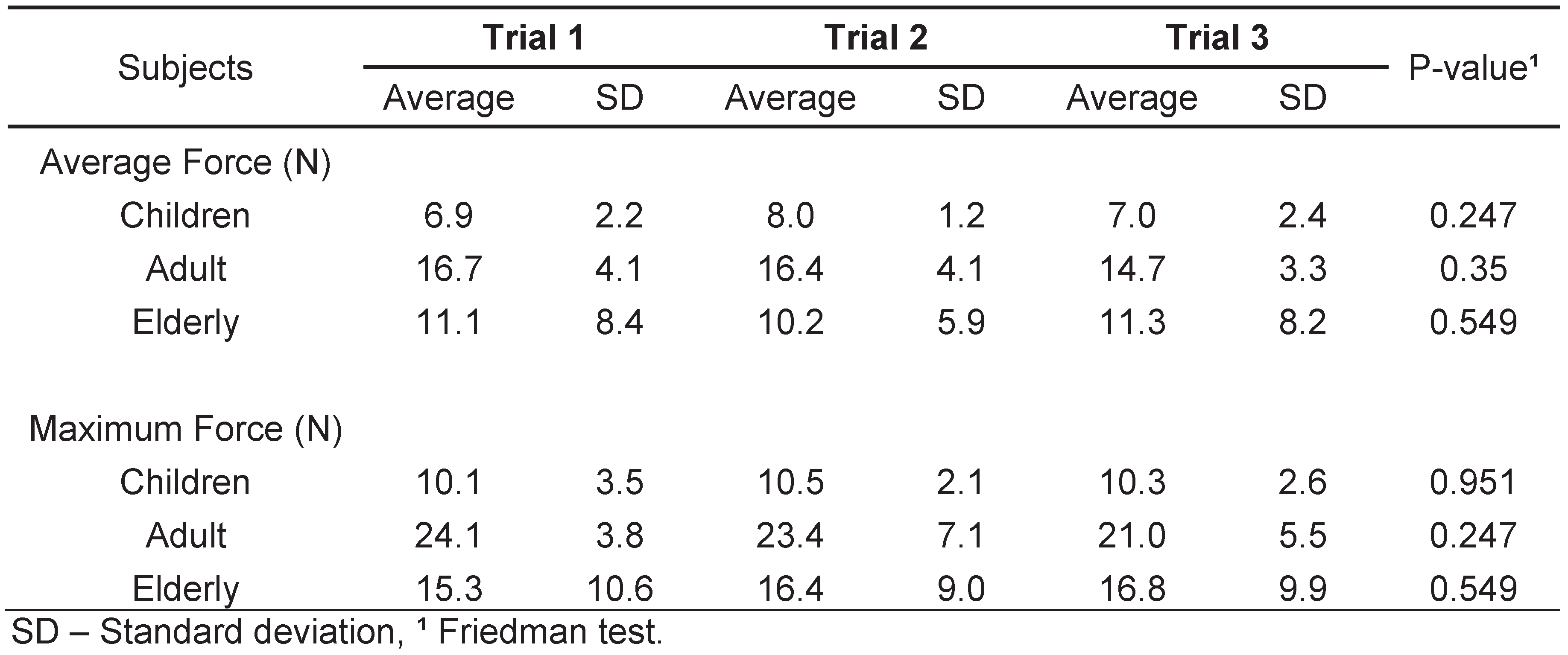 |
© 2010 by the author. 2010 Renata Maria Moreira Moraes Furlan, Amanda Freitas Valenti, Tatiana Vargas de Castro Perilo, Cláudio Gomes da Costa, Márcio Falcão Santos Barroso, Estevam Barbosa de Las Casas, Andréa Rodrigues Motta
Share and Cite
Furlan, R.M.M.M.; Valenti, A.F.; Perilo, T.V.d.C.; da Costa, C.G.; Barroso, M.F.S.; de Las Casas, E.B.; Motta, A.R. Quantitative Evaluation of Tongue Protrusion Force. Int. J. Orofac. Myol. Myofunct. Ther. 2010, 36, 33-43. https://doi.org/10.52010/ijom.2010.36.1.4
Furlan RMMM, Valenti AF, Perilo TVdC, da Costa CG, Barroso MFS, de Las Casas EB, Motta AR. Quantitative Evaluation of Tongue Protrusion Force. International Journal of Orofacial Myology and Myofunctional Therapy. 2010; 36(1):33-43. https://doi.org/10.52010/ijom.2010.36.1.4
Chicago/Turabian StyleFurlan, Renata Maria Moreira Moraes, Amanda Freitas Valenti, Tatiana Vargas de Castro Perilo, Cláudio Gomes da Costa, Márcio Falcão Santos Barroso, Estevam Barbosa de Las Casas, and Andréa Rodrigues Motta. 2010. "Quantitative Evaluation of Tongue Protrusion Force" International Journal of Orofacial Myology and Myofunctional Therapy 36, no. 1: 33-43. https://doi.org/10.52010/ijom.2010.36.1.4
APA StyleFurlan, R. M. M. M., Valenti, A. F., Perilo, T. V. d. C., da Costa, C. G., Barroso, M. F. S., de Las Casas, E. B., & Motta, A. R. (2010). Quantitative Evaluation of Tongue Protrusion Force. International Journal of Orofacial Myology and Myofunctional Therapy, 36(1), 33-43. https://doi.org/10.52010/ijom.2010.36.1.4




